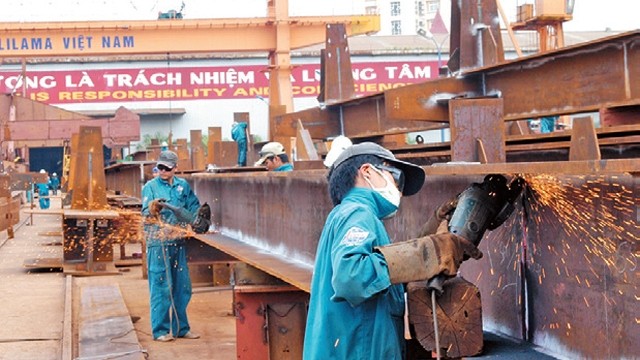This comment was made by Nguyen Bich Lam, head of the General Statistics Office (GSO), in an interview with Nhan Dan.
Q: Vietnam’s economic growth in the first nine months of 2016 was estimated at 5.93%, much lower than the 6.53% posted during the same period of last year. What do you think about this figure?
A: The growth in the past nine months of this year was lower than that in 2011 and 2015 at 6.03% and 6.53% respectively, but was apparently higher than that of 2012, 2013 and 2014. It indicates that Vietnam’s economy during the first three quarters made no major breakthroughs but still maintained stability and the pattern that growth within a quarter is higher than that in the previous quarter. Such a result suggests that Vietnam can achieve reasonable growth despite the difficulties if there is a combination of the bold action by the Government and the active participation of businesses.
Faster growth in the third quarter also debunks the myth that Vietnam’s growth is mostly dependent on the exploitation of natural resources. Specifically, the mining sector posted negative growth in these nine months, expanding by 0.2% in the first quarter but shrinking by 5.3% and 6.8% in the second and third quarters, respectively. And agriculture, which also relies on natural resources, registered a small increase. This is a valuable experience for us to further stimulate sectors not based on the exploitation of natural resources in the future so as to boost overall economic growth.
Q: Despite difficulties, the government is still aiming for 6.7% for the whole year. What do you think about the possibility of achieving this goal?
A: The 6.4% expansion in the third quarter was relatively high in comparison with many previous years, suggesting that the economy is doing well. The difference between growth in the third and second quarter is 0.62 percentage point, nearly double the difference between the second and third quarter.
Furthermore, most sectors, such as manufacturing, construction and services posted solid growth. Regarding agriculture, the sector experienced negative growth in the first half of the year due to the impact of climate change and the Formosa environmental disaster, but was recovering and saw a 0.65% expansion in the third quarter.
In another respect, exports in the first nine months increased by 6.7% year on year, indicating an acceleration of domestic production activity. Imports also rose 1.3% after declining 0.5% in the first half, suggesting that exports were growing quickly in the third quarter. Furthermore, most imports were materials and machinery for manufacturing, with consumer imports only making up 10%, so this will have a large impact on the fourth quarter’s growth. The first nine months also saw more than 100,000 enterprises establish themselves or resume operations, which will become an important driver to boost growth for the remainder of the year.
Recently, the Asian Development Bank (ADB) cut its Vietnam growth forecast for 2016 to 6% but its projection was based on Vietnam’s performance in the first half, when the economy was still sluggish. Growth gained momentum in the third quarter and could go faster in the next quarter. Vietnam’s growth for the whole year is unlikely to reach 6.7%, but is certain to exceed 6%.
Q: So what are the most important drivers to boost growth in the time ahead?
A: In the time ahead, the drivers of growth should come from the following several factors. The first is enterprises. Since the start of the year, the Government has taken many measures to create a favourable business environment and to encourage the growth of the business community. Business registration figures paint a bright picture of the situation, with more than 100,000 enterprises being established or returning to business. Of more than 81,000 newly established enterprises, about 95% have come into operation, an indication that the business environment has improved significantly, helping to reduce the time from registration to the commencement of operations. Furthermore, according to a survey of more than 5,000 enterprises, 85.65% say their situation will improve towards the end of the year.
The second driver will be efforts for economic restructuring, especially in agriculture. As the country is suffering badly from climate change, disasters, environmental pollution and saltwater intrusion, and as similar episodes will occur again in the years ahead, it is critical to restructure the agricultural sector. Growth in agriculture has returned, but its contribution to the economy is falling, forecast to reach 15% this year compared with about 18-19% in the past. This is an important sector, and restructuring is necessary for it to drive the economy.
The third driver is domestic consumption. In the past, Vietnam mainly focused on exports, considering them the main engine of growth. But the domestic market, with a population of 90 million, is also potentially lucrative.
These are the three groups of drivers that we need to focus on to foster economic growth in the fourth quarter and the years to come.
Thank you very much.
















